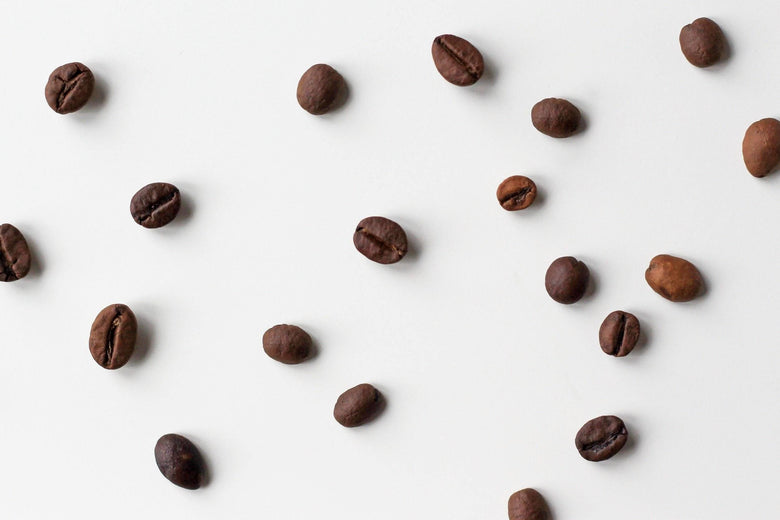Why Espresso Fans Prefer SOE Single Origin Espresso for Authenticity
Why Espresso Fans Prefer SOE Single Origin Espresso for Authenticity
Blog Article
Understanding Coffee Beans: the Journey From Espresso to Blended Coffee Beans

The Origins of Coffee: A Global Viewpoint
While you could consider coffee as a modern staple, its origins map back centuries, linking with societies throughout the globe. The story starts in Ethiopia, where legend says a goat herder named Kaldi found the invigorating impacts of coffee beans after noticing his goats romping vigorously after eating them. This stimulated interest, causing coffee's spread to Arab investors who treasured the brewed drink. By the 15th century, it got to Persia, Egypt, and Turkey, where coffee shops ended up being social centers for conversation and culture.
As trade routes increased, coffee made its way to Europe in the 17th century, quickly obtaining popularity. Each culture added its one-of-a-kind twist to coffee preparation, enhancing its history.
Growing and Harvesting of Coffee Beans
As coffee's trip progressed, the focus changed to the cultivation and harvesting of specific bean varieties, particularly those utilized for coffee. You'll discover that espresso beans frequently originate from Arabica or Robusta plants, each offering distinct flavors. The optimal growing problems consist of high altitudes and rich, well-drained soil, which improve the beans' high quality.
During the harvest, picking techniques vary. Timing is crucial; you desire to harvest when the cherries get to peak ripeness for maximum taste.
When harvested, the beans are planned for processing, which is necessary in determining their final preference. Comprehending the growing and collecting processes provides you insight right into what enters into your favorite espresso, enhancing your recognition for each mug.
Handling Approaches: From Cherry to Bean
Now that you've found out about collecting espresso beans, let's check out just how those cherries change into the coffee beans you like. You'll see how different harvesting methods influence taste, adhered to by the necessary actions of fermentation and drying out. We'll break down the milling and grading procedure that identifies your coffee's quality.
Harvesting Methods Clarified
When it comes to coffee, recognizing harvesting methods is crucial, since they directly affect the flavor and top quality of the beans you enjoy. There are 2 main techniques: careful picking and strip selecting. Careful picking entails hand-picking only ripe cherries, guaranteeing you obtain the very best quality beans. This method frequently causes a richer flavor profile, though it's even more labor-intensive. On the various other hand, strip picking ways harvesting all cherries at the same time, despite ripeness. While it's quicker and less costly, this can lead to a mix of tastes, influencing the end product. Eventually, the choice of collecting technique can substantially influence your coffee experience, so it deserves understanding just how those beans made it to your mug.
Fermentation and Drying
After collecting, the next action in handling coffee beans play a substantial function fit their taste. You'll locate that fermentation is essential, as it aids break down the mucilage surrounding the beans, improving their preference account. Relying on the approach, this procedure can last from a few hours to a number of days, with differing results based on temperature level and moisture.
Sun-drying enables the beans to take in flavors from the environment, while mechanical drying out guarantees regular dampness degrees no matter of weather. Proper drying out is essential to avoid mold and protect the beans' top quality, inevitably affecting your mug of coffee.
Milling and Grading Refine
As fermentation and drying out set the stage for flavor growth, the milling and grading procedure warranties that only the finest coffee beans make it to your mug. This phase entails removing the outer layers of the coffee cherry, consisting of the parchment and husk. Premium beans receive a greater grade, resulting in a richer coffee experience.
Roasting Methods: Unlocking Taste Possible
When you roast coffee beans, the approach you choose can substantially influence the taste profile. Recognizing the relationship in between time, temperature, and roasting methods is essential to revealing the possibility of your mixture. Allow's check out how these aspects collaborated to create the best cup.
Roasting Methods Explained
While you might think that all coffee toasting approaches yield the same results, the fact is that each technique reveals special flavor potentials in the beans. You can pick in between techniques like drum roasting, air roasting, or perhaps traditional pan roasting. Drum roasting utilizes a turning drum to uniformly disperse warm, enhancing caramelization and generating a well balanced taste. Air roasting, on the other hand, flows warm air around the beans, advertising a lighter roast with noticable acidity. Pan roasting enables for hands-on control but calls for constant focus to avoid burning. Each method has its nuances, so try out different methods can assist you uncover the ideal roast that lines up with your preference preferences. Appreciate the trip of locating your suitable mug!

Influence On Flavor Account
Various roasting approaches not just affect the process yet additionally substantially affect the flavor profile of the coffee beans. Dark roasts, on the other hand, bring out bold, smoky tastes, often covering up the bean's special characteristics. Understanding these subtleties helps you appreciate the virtuosity behind your mug of coffee, boosting your overall experience with every sip.
Time and Temperature Level Variables
To release the full taste possibility of coffee beans, both time and temperature level during the roasting process play considerable duties. When toasting, you'll find that greater temperatures can rapidly develop flavors, however if you hurry it, you may finish up with scorched notes. Alternatively, reduced temperature levels permit for a much more steady flavor development, showcasing the beans' unique qualities.

Timing is just as Your Domain Name important; extending the roast too long can bring about a loss of level of acidity and illumination, while too brief a roast may leave the beans underdeveloped. Discovering that wonderful spot calls for practice and testing. By readjusting these elements, you can disclose the abundant, intricate tastes hidden within each bean, creating a genuinely exceptional coffee experience.
The Art of Blending: Crafting Unique Coffee Accounts

Start by choosing a base coffee that offers a solid foundation. Pick complementary beans to improve certain flavor notes. A brilliant Ethiopian bean can bring fruitiness, while a rich Brazilian coffee adds body. Experimentation is vital-- do not be scared to change ratios until you discover your ideal profile.
As you blend, remember that each mix tells a story. You're not simply making coffee; you're producing an experience. So, take your time, preference often, and enjoy the journey of discovering your signature blend.
Brewing Methods: Just How Prep Work Influences Flavor
Blending coffee opens up a domain name of flavor opportunities, yet how you brew that blend can substantially influence your final mug. On the various other hand, a pour-over highlights the coffee's clearness and brightness, excellent for showcasing fragile notes.
Coffee, with its high pressure, produces a concentrated shot that emphasizes sweetness and crema. If you favor a lighter mixture, take into consideration a chilly brew approach; it yields a smooth, less acidic preference.
Inevitably, testing is vital. these details Adjusting variables like water temperature, grind size, and brew time can transform your coffee's profile. So, accept the art of developing to find the flavors concealed in your coffee blends. The right technique can raise your experience to brand-new elevations.
The Future of Coffee: Sustainability and Technology
As the coffee market progresses, sustainability and technology are becoming crucial for dealing with environmental challenges and meeting customer demands. You'll notice that more coffee business are embracing eco-friendly practices, from sourcing beans morally to applying sustainable farming techniques. These changes not only aid the planet but also boost the high quality of the coffee you take pleasure in.
You could see advancements like naturally degradable packaging and water-saving developing approaches that decrease waste. Advanced technology, such as blockchain, is likewise becoming popular, ensuring openness in the supply chain, which enables you to trace your coffee back to its beginnings.
Furthermore, purchasing regional communities and sustaining farmers through fair profession initiatives fosters a much more lasting coffee ecosystem. As you sip your following mug, keep in mind that check your options can add to a brighter future for coffee. By selecting sustainable brand names, you're not just taking pleasure in a drink; you're making a favorable influence on the globe.
Often Asked Inquiries
What Is the Difference Between Arabica and Robusta Beans?
Arabica beans are smoother, sweeter, and have a higher acidity, while robusta beans are stronger, much more bitter, and have more caffeine. When brewing your coffee., you'll observe these differences in taste and fragrance.
How Does Altitude Affect Coffee Bean Taste?
Elevation effects coffee bean taste considerably. Higher elevations generate beans with brighter acidity and facility flavors, while reduced elevations commonly produce beans that are heavier and much less nuanced. You'll observe these distinctions in your mug!
What Are the Health Benefits of Drinking Coffee?
Consuming coffee can enhance your power, enhance mental emphasis, and even enhance physical performance. It's abundant in antioxidants, might decrease the danger of certain illness, and can promote a much healthier metabolic rate when consumed in moderation.
Can Coffee Beans Be Recycled for Brewing?
Yes, you can reuse coffee beans for brewing, but the flavor may be weak. If you enjoy trying out, try reusing them in various ways, like cool mixtures or contributing to smoothies for an added kick.
Exactly how Should I Store Coffee Beans for Quality?
To keep your coffee beans fresh, keep them in a closed container in a trendy, dark place. Stay clear of exposing them to warm, wetness, or light, as these variables can quickly weaken their taste and scent.
Understanding Coffee Beans: the Trip From Coffee to Blended Coffee Beans.
Now that you have actually learned about harvesting coffee beans, let's explore exactly how those cherries change into the coffee beans you like.When you roast coffee beans, the technique you choose can substantially impact the taste account - Single Origin Espresso.While you may assume that all coffee toasting approaches produce the exact same results, the reality is that each strategy exposes distinct taste potentials in the beans.Different roasting techniques not only affect the procedure however likewise greatly affect the taste profile of the coffee beans
Report this page